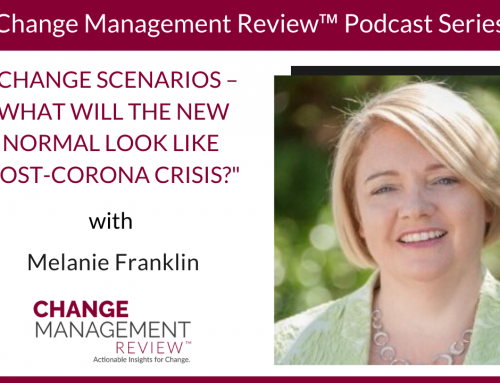In Healthcare Trends: Coronavirus and Pandemic-Related Change, Prosci’s Janice Epp brings a change management lens to the healthcare industry’s response to the coronavirus. While a few of her messages are specific to that industry, most are applicable across every workplace that is or may be affected by this pandemic.
According to the author, “two key issues affect how clinicians deliver care, which also drives changes in the industry.” She identifies the first of these as the autonomous nature of employees. Epp writes, “Clinicians generally have difficulty accepting change at face value without clear, convincing evidence.” In the case of the coronavirus, we are all operating with a lot of uncertainty. For those who, like clinicians, need proof that change in their work habits is required, that proof is growing, but there are still many questions to be answered. Just as the healthcare industry is now implementing strong – and mandatory – precautionary measures, your workplace should be doing the same.
The second issue that Epps raises is the lack of designated change management resources. While this is changing across all industries, it remains true in many workplaces today. From Change Management Review’s perspective, now is the time for organizational leadership to recognize the strategic value that skilled change management practitioners can bring. They are prepared to help you think through how best to successfully make the changes that need to be made. They are prepared to help you think through how best to surface the inevitable resistance to such changes, and how to leverage that resistance to build commitment and forward momentum. And they are prepared to monitor progress in executing the changes, identifying the risks that arise, and recommending the most effective ways to mitigate those risks. “Prosci research shows that if your change management effectiveness is excellent, you are six times more likely to meet or exceed the desired outcomes.”
The article then identifies what Epps refers to as “adaptations to gain buy-in.”
- “Alignment with employee characteristics:” It is vital that you bring employees onboard as you think through and roll-out your changes. They best know how to do the jobs they are now doing. They know how proposed changes in response to the coronavirus will affect their ability to do those jobs. Engage them. Hear them.
- “Communication across the organization:” At one level it is simple. When people don’t know something, they fill in the gaps. This is the root source of rumors. Communicate. Communicate. Communicate. Even when it is to say, “our plan is to roll out a coronavirus strategy within the next three days,” people now know what to expect and when to expect it. As a side note, research by the Center for Risk Communications has shown that during a crisis, the most credible voice is that of the immediate supervisor. Be sure that you are providing them with the key messaging, and that they are delivering those messages at all levels of the organization.
“Since 1998, Prosci Best Practices in Change Management research has consistently identified active and visible sponsorship as the leading contributor to successful change. This applies to every industry, including healthcare.” Sponsors, those who can hold employees accountable for executing the required changes, need to be visible. Your commitment to the health of your employees and their families now will be remembered in employee commitment to the organization for years to come.
Now is a critical time for organizational leaders to be change leaders, and for qualified change practitioners to be the strategic advisors they are capable of being.




